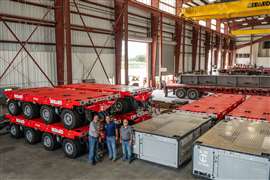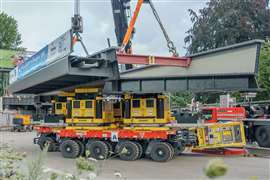Top trends in the crane industry for 2024
15 September 2023
From technological advances to ongoing labour shortages and supply chain disruption, the construction industry has experienced its share of trends in recent years. All the more reason to keep your finger on the pulse of what’s happening in the industry around you, and how it will impact your business.
 Joel Dandrea, CEO of SC&RA
Joel Dandrea, CEO of SC&RA
Right out of the gate for 2024 and beyond, these are the noisemakers: building information modelling (BIM), construction robotics, construction project management, advanced building materials, offsite construction, construction worker safety, construction monitoring, green buildings, 3D printing and connected construction sites.
While not all of these are new, they’re worth paying attention to. For example, drilling down on BIM, many emerging contech applications comprise virtual design and visualisation – ranging from BIM to construction management software.
BIM is a collaborative process that requires input from multiple stakeholders, including engineers, architects, contractors and clients. Advanced BIM provides a central database and enables everyone to work on a single shared model.
Part of this equation includes virtual design and construction (VDC), which describes the use of virtual environments to engineer and visualise the development of structures before they’re actually built.
And there’s a reason it’s catching on: an estimated 30 per cent of construction costs are associated with reworks due to faulty or incorrect builds. BIM is probably the most popular VDC tool. Worth noting as well, the BIM market is valued at close to US$9 billion and growing.
Turning heads
Another topic from the above list is advanced building materials. As the construction industry shifts to modular and green approaches, ABM are complementing myriad new ways to build things. Many innovative and sustainable materials, such as 3D-printed concrete and basalt, are replacing older ones. Materials made from living organisms are also gaining in popularity, including self-healing concrete that uses bacteria.
To that end, the 3D printing market is growing at an incredible rate, with reports showing a compound annual growth of more than 100 per cent through 2030.
In addition to the versatility of materials in 3D printing (concrete, geopolymers, fibres, sand and more), innovators are also beginning to use biodegradable materials like mud, soil and straw. In most instances, only the frame and walls of a building can be manufactured with 3D printing. Technology, however, is advancing so fast that plumbing and electrical fixtures are becoming a regular integration into the building process via 3D printing.
Construction robotics is another topic that likely turns heads for many in the industry today, and that’s because so much of the traditionally repetitive and time-consuming tasks in construction can be done faster, more safely and with more precision.
In addition, reduced waste, enhanced productivity and closing the workforce gap are early goals being achieved industry-wide by robotics and other automation strategies. And the market has taken note.
A survey commissioned by ABB showed more than half of construction companies are using robots and 81 per cent expect to introduce them in the next ten years. The market is expected to reach $359 million by 2031.
While just a snapshot, it only keeps us better prepared, more aware and hopefully more profitable, to keep our eyes and ears open as these trends continue to emerge and evolve. We may not always employ each of them to an equal extent, but we certainly don’t want to get left behind as they shape the industry around us.
STAY CONNECTED


Receive the information you need when you need it through our world-leading magazines, newsletters and daily briefings.
CONNECT WITH THE TEAM












